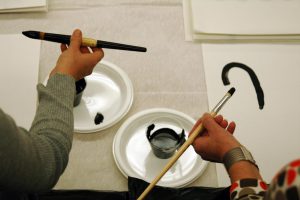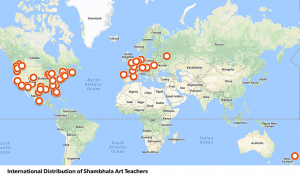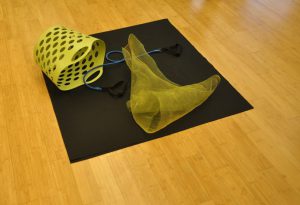Saturday
Featured StoriesReport on Shambhala Art
The last ten years in Shambhala Art, and what’s coming next
by Stuart Rice, Steve Saitzyk, and Anne Saitzyk
 Shambhala Art is a living, evolving, and expanding set of teachings based on the Vidyadhara Chögyam Trungpa Rinpoche’s presentations on visual dharma and dharma art. The Vidyadhara’s visual dharma and dharma art teachings are more about how we live our lives creatively and non-aggressively than a specific form of artistic expression. The Shambhala Art teachings provide an opportunity to extend our meditative awareness into our everyday life. Sakyong Mipham Rinpoche has said , “It is wonderful to sit and practice meditation, and at some point, we also have to stand up;” Shambhala Art provides training in how to do the standing up (and everything else) with a sense of playfulness, gentleness, and sacredness.
Shambhala Art is a living, evolving, and expanding set of teachings based on the Vidyadhara Chögyam Trungpa Rinpoche’s presentations on visual dharma and dharma art. The Vidyadhara’s visual dharma and dharma art teachings are more about how we live our lives creatively and non-aggressively than a specific form of artistic expression. The Shambhala Art teachings provide an opportunity to extend our meditative awareness into our everyday life. Sakyong Mipham Rinpoche has said , “It is wonderful to sit and practice meditation, and at some point, we also have to stand up;” Shambhala Art provides training in how to do the standing up (and everything else) with a sense of playfulness, gentleness, and sacredness.
It has been almost 25 years since the 1996 Dharma Art conference at Shambhala Mountain Center; this conference planted a seed that sprouted into the Shambhala Art teachings. This impending anniversary prompted soul-searching questions: “What have we accomplished in two decades? Where do we want to go next?” With the insight and help of our friends at Kalapa IT, we had the opportunity to pore over a decade of program data available in the Shambhala database. Combining our soul-searching with numbers, we recently completed and shared with the Kalapa Council our “Shambhala Art Ten Year Review.” We then shared this report with our Shambhala Art educators, and now are pleased to share this report with the wider mandala and world.
Here is a brief summary of what the report contains. Since 2008, there have been over 500 Shambhala Art programs scheduled on four continents. Over 2,000 people have registered for programs, with participants on every continent except Antarctica. Our most common programs are Shambhala Art Parts I and II, along with various Shambhala Art related programs, such as Shambhala Art Day and talks about Shambhala Art. We have nearly 100 active educators who have offered these 500 programs across the mandala; like our participants, our educators span the globe from Los Angeles, California to L’viv, Ukraine. Like the Shambhala dharma, Shambhala Art has touched nearly the entire world (sorry, Antarctica — we’ll get there someday).
What is next for Shambhala Art? Our main focus for the coming year is strengthening our base of educators, so that they can share these teachings more extensively and effectively throughout the mandala. To expand the availability of teachings, we are developing courses with Shambhala Online so that individuals can participate in Shambhala Art regardless of location. Finally, we are talking with our colleagues on the Kalapa Council about situating Shambhala Art more centrally in the mandala. It is important that Shambhala not mirror the mistakes of the samsaric world, which places art as a distant low priority. Through the Council’s support we hope to reestablish art as a central practice in the mandala, similar to practices like the Dorje Kasung in visibility and accessibility to practitioners.
The Vidhyadhara believed that the way to change a society was to change the way society views and creates art. As our current Sakyong continues to elaborate the societal vision of Shambhala, we look forward to helping by creating a view on art that supports this vision.
Here is a Dropbox link to the report itself: https://www.dropbox.com/s/mnbjbg1slb2nmmf/10%20Year%20Report%20%28For%20Distribution%29.pdf?dl=0.


















